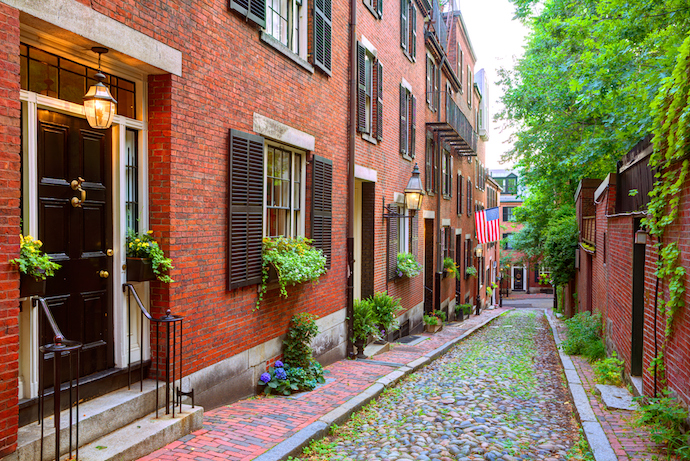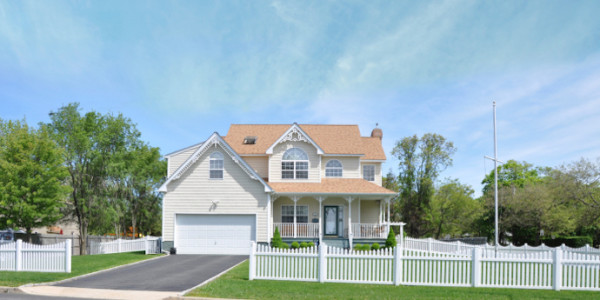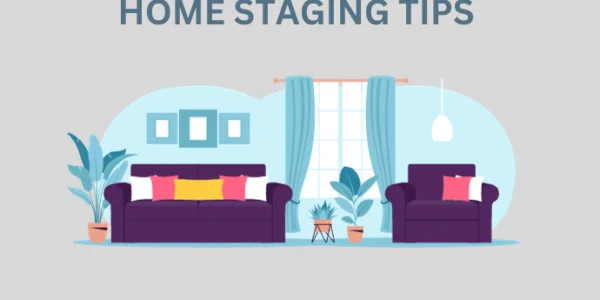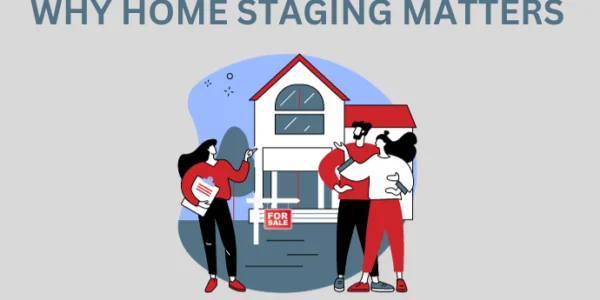While house hunting, my husband and I fell in love with a yellow Victorian cottage with an original stamped tin roof. After we moved in, we found out the charm of an old house comes at a cost.
First, we had trouble getting home insurance because the roof was so old. Then after several years of torrential Southern rainstorms, the nearly 140-year-old roof began to leak badly. We put an empty cat litter bucket in our living room to catch the water as we researched historic roof restoration.
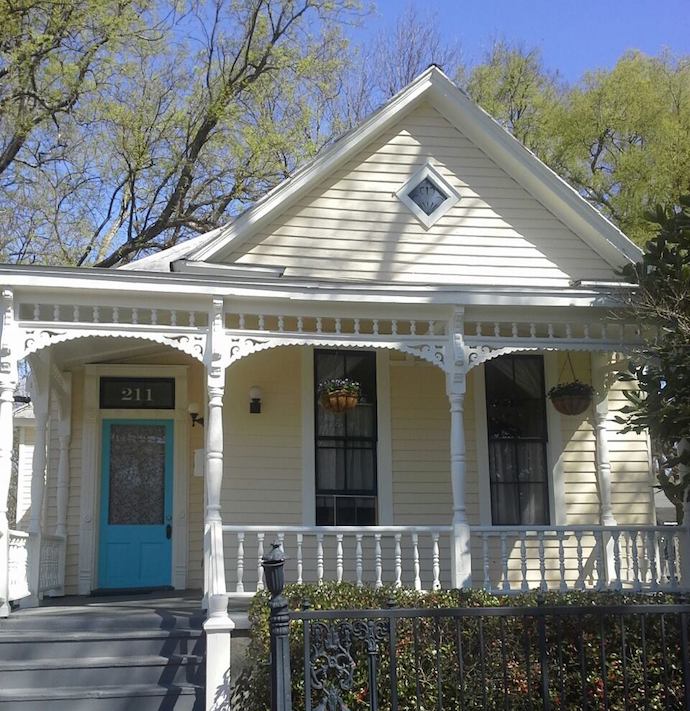
My Victorian cottage after my husband and I finished painting. We never wanted to see a brush again.
I spent almost a year studying and pricing options, and looking for a local contractor who could perform the work. I learned that a restoration would cost a bundle, wasn’t guaranteed to last more than a few years, and would require hiring a company from five states away. I felt terrible, but we made the decision to replace the antique shingles with an asphalt shingle roof.
In the five years we’ve owned our home, and in the several years we lived in a 1913 Craftsman before this, we’ve learned many lessons. Here are just a few:
It’s more than just a house.
If you buy a historic home, you’re living in a piece of history. In the case of our roof, that meant we had to consider historic preservation. Your neighbors might have strong opinions about what you should do with your home. We had to go to the local historic preservation board to get our roof project approved, and one of our neighbors showed up to oppose our taking off the old roof. That made an already tough decision more stressful. On the plus side, you might be able to get city, state or federal historic preservation tax credits for making improvements.
Living in an old house can get awkward.
Old houses aren’t made for modern life. For example, my closet is tiny but I lack the funds to enlarge it, so I had to downsize my clothes and create a capsule wardrobe.
Pattie Haubner, who owns a 1926 Colonial home in Scarsdale, NY has a tiny third-floor bathroom that used to be part of the maid’s quarters.
“At times, I have been frustrated by the size and layout of the rooms because they were designed for lifestyles of another era,” she said.
Haubner recommends making sure before you buy an old home that you “love the bones and layout.”
Old houses require regular maintenance.
A few years after we moved into our house, the paint on our wood siding began to peel so badly that we had to act right away or risk wood rot. We got several exterior painting bids, but all were $10,000 or more for applying the paint with a sprayer.
I talked my husband into spending a summer painting the house with me. We painted until we never wanted to see a brush again. On the positive side, there’s no better way to get to know neighbors than painting the outside of your house.
Be prepared for unexpected problems.
Old homes are full of surprises, partly because some of their components might date back decades. One example: sewer lines. Most pre-1950 homes have clay sewer lines, which can get invaded by tree roots. That’s what happened at our Craftsman home. It caused our basement to flood with sewer water not long after we moved in, a shock to find on a Saturday morning.
When Lola Sims bought a 1920 home in Allendale, PA for $6,700, she encountered many awful surprises, including “busted pipes that flooded the kitchen, backed up waste, having to dig new gas lines, finding six sub floors, and tree roots growing in the basement.”

Consider high energy costs.
If an old house seems like a bargain, remember to look at the cost to heat it in winter and cool it in summer. For example, Mike Arman, a retired mortgage broker in Oak Hill, FL, has owned historic homes and now lives in a new home he built. Drafty windows and doors and poor or no insulation can cause sky-high energy bills in old homes, he said. Since he built his new home, his monthly energy bill has broken $100 only once during a very hot summer, he said. If you have an old home, you might have to add insulation or hire someone to do it for you.
Living in an old home can be fun and rewarding, especially if you love history and have good renovation skills. But know what you’re getting into before you buy.


